Raw and boiled potatoes as food for guinea pigs, hamsters and livestock
Pet lovers try to diversify the diet of their pets. However, it happens that such care leads to sad consequences. Small pet rodents are at high risk of food poisoning. Often children try to feed them what they eat themselves. Adults also like to experiment - and not always successfully.
Potatoes are considered a popular and affordable food for animals. In raw and cooked form, it is widely used in animal husbandry. Many guinea pigs and hamsters love the vegetable in any form. But it is not suitable for everyone due to the physiological characteristics of the body.
Chemical composition, microelements and characteristics of potatoes
Potato is an annual tuberous plant, food and agricultural crop. Serves as a raw material for the food, chemical, and textile industries.
Depending on the nutritional composition of the tubers, the vegetable is divided into groups:
- dining room;
- aft;
- technical;
- universal.
100 g of product contains 17.5 g of carbohydrates. This represents about 89% of the total energy from the serving.
Calorie content - 77 kcal.
Basic composition in 100 g:
- fats - 0.09 g;
- proteins - 2.05 g;
- carbohydrates - 17.49 g;
- water - 79.25 g;
- ash - 1.11 g.
The root vegetable contains fat-soluble vitamins - beta-carotene, B and K. Water-soluble are represented by vitamins C, B1, B2, B3 (PP), B4, B5, B6 and B9.
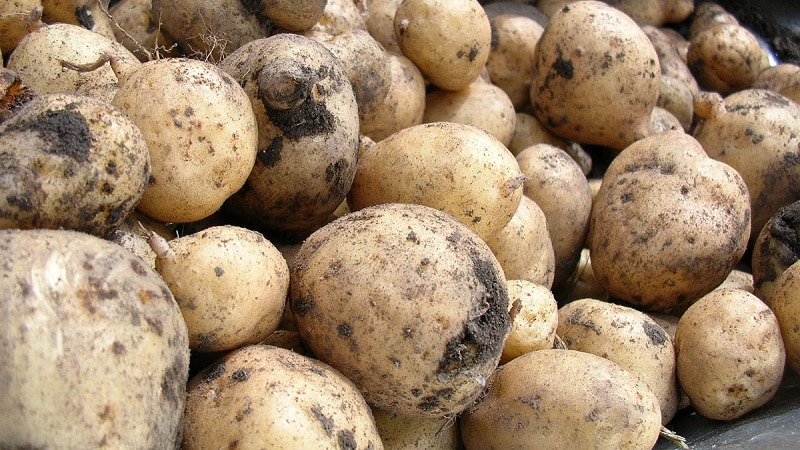
Contains raw potatoes:
- calcium;
- iron;
- magnesium;
- phosphorus;
- potassium;
- sodium;
- zinc;
- copper;
- manganese;
- selenium.
How suitable are potatoes as animal feed?
Feed varieties are widely used in livestock farming. But not all animals digest this product well.
The leaders in potato consumption among livestock are pigs. Their body absorbs 90% of the protein contained in the tubers. However, we are not talking about raw, but about boiled potatoes. On pig farms, boiled tubers are pounded and mixed feed is added to them in a 4:1 ratio. With this diet, pigs gain weight well.
Cattle are unpretentious and eat potatoes raw. Chopped vegetables are mixed with grain or silage. Artiodactyls eat not only tubers, but also tops and peels left after peeling.
A relatively new type of feed - dried potatoes, approved by livestock farmers. It is nutritious due to its high protein and feed unit content. It weighs 5 times less than raw food, so it is popular for preparing feed mixtures. The dried product is more convenient to store - it takes up less space and has a long shelf life.
Can guinea pigs be given potatoes?
Lovers of decorative pets try to diversify the diet of their pets.
When deciding to feed your guinea pig potatoes, study the composition of the product. Experienced owners are very concerned amount of starch in a vegetable. Therefore, complementary feeding is started with small doses.
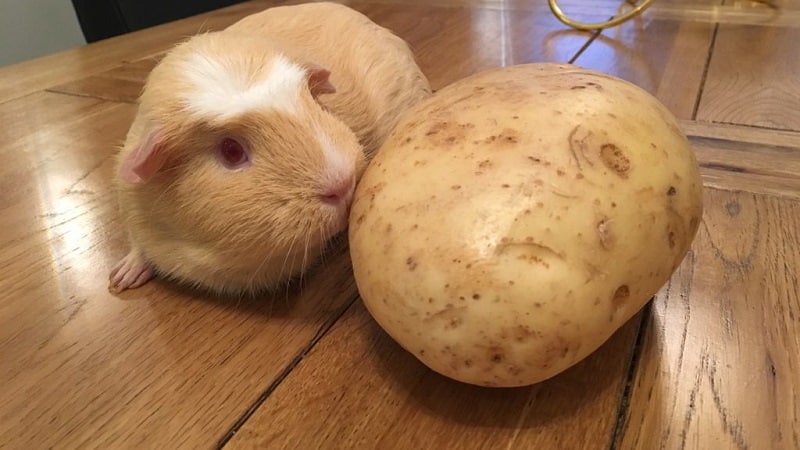
Raw
Can guinea pigs eat raw potatoes? Animal owners check this themselves. A small piece of raw tuber is placed along with other usual vegetables. Observe the reaction to the new product. Even if the animal ate it with pleasure, it is not recommended to immediately give a second piece. Monitor your body's reaction during the first 24 hours.
For the next 3 days, give one piece at a time, preferably before lunch, to notice possible deviations. in digestion. If the pet feels well, then raw potatoes are included in its diet 2-3 times a week.
Boiled
Veterinarians recommend giving boiled tubers to older guinea pigs. Aging individuals find it difficult to chew raw potatoes.
Boiled potatoes are mashed with a fork and added to the food. It is better digested and replenishes the aging body with vitality.
Read also:
Is it possible to give rye to rabbits, chickens, pigs and cows?
Can hamsters be given potatoes?
Veterinarians and pet experts have conflicting opinions on whether hamsters can be given potatoes.. It all depends on the individual physiological characteristics of each animal.
If it is well tolerated, there are no digestive system disorders, or signs of deterioration in health, the vegetable is included in the rodent’s diet in small quantities.
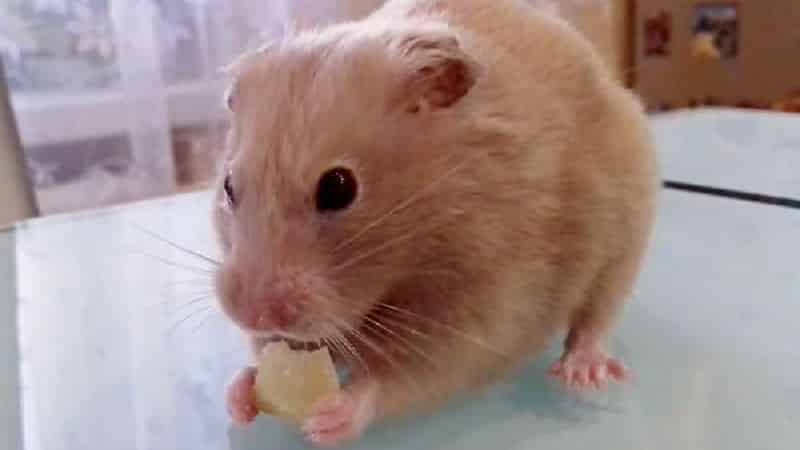
Raw
The hamster, as a representative of rodents, eats raw vegetables and fruits in nature. A pet is no exception, so hamsters will benefit from raw potatoes.
If there is a lack of vitamin C, the vegetable helps fight vitamin deficiency, and fast-growing teeth wear down better on raw tubers.
Boiled
It is recommended to include boiled vegetables in the diet of hamsters. They easier to digest, especially by older individuals.
Attention! The vegetable is boiled without salt.
Boiled vegetables contain a large amount of starchwhich leads to excess weight gain. Excess weight has a bad effect on heart function in rodents, and overall health worsens.Therefore, this product should not be given daily.
Features of fodder potatoes for livestock
Potatoes grown for livestock feed are called fodder potatoes. These varieties have a higher amount of protein, but have a less pronounced taste.. It has a beneficial effect on the body of animals and increases their productivity.
Forage crops are distinguished:
- high productivity;
- high nutrient content;
- short ripening periods.
Feed tubers are usually 2-3 times larger than table tubers. They often have an irregular shape and taste bland and watery. They get very soft when cooked.
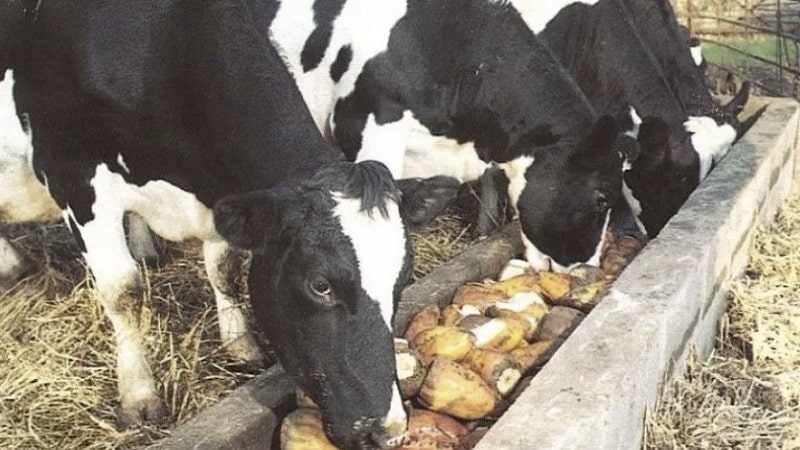
Benefits of fodder tubers:
- high starch content - it is well absorbed;
- high amount of protein - animals grow quickly;
- a complete set of nutrients - other crops that are grown for food do not have such nutritional value;
- high yields.
Flaws:
- during long-term storage, beneficial properties decrease;
- If storage conditions are not met, they turn green and form a toxic substance - solanine.
For long-term storage, silage technology is used — the tubers are acidified with organic acids, which are formed during the fermentation of sugars.
Potato damage
In case of high content in tubers solanine there is a risk of animal intoxication.
The severity of poisoning depends on the amount of potatoes eaten, depending on the physiological characteristics of the animals.
For guinea pigs
Veterinarians consider the main disadvantage of potatoes a large amount of starch.
If your pet has a healthy digestive system and feels good after complementary feeding, they include raw vegetables in their diet, in small quantities and infrequently.
If there is an excess there are consequences:
- obesity;
- liver enlargement;
- chronic diarrhea;
- hepatitis.
For hamsters
Categorically It is forbidden to give raw potatoes to Djungarian hamsters.
The digestive system of this rodent is particularly sensitive. A small amount of solanine in the product will cause intoxication.
Djungarian hamsters are recommended boiled potatoes in moderation in combination with other foods.
For livestock
Used as feed for farm animals vegetable tops and tubers.
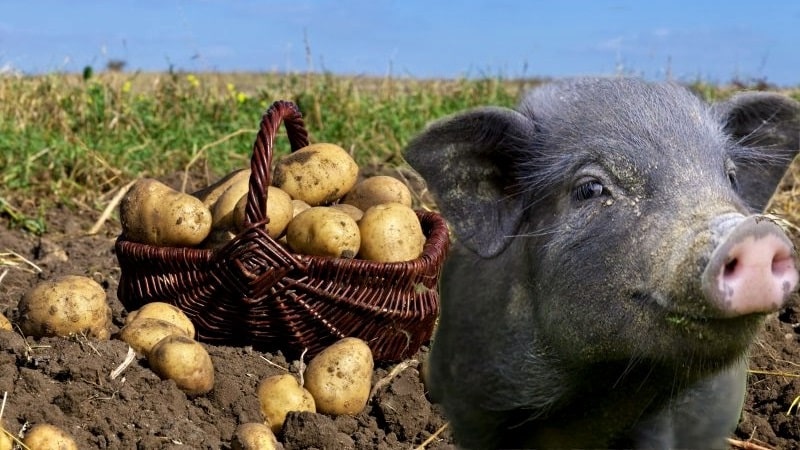
There is a small amount of solanine in potato tops and new potatoes.. Its content increases with prolonged and improper storage.
Tubers left in the sun for a long time pose a great danger to livestock. Animals that graze in these fields after harvesting potatoes are at great risk of poisoning.
Important! Even the water in which the peels with shoots or greened tubers were boiled is dangerous. Giving animals such a decoction is strictly prohibited.
Conclusion
Forage potato varieties are used in livestock farming. They are distinguished by their nutritional value, high yield, and high protein content. Animals are fed raw and cooked vegetables. As complementary food, ordinary table potatoes are given to hamsters and guinea pigs.
For young individuals, a raw, high-quality product in small doses is not harmful. Abuse leads to excess weight and digestive system disorders. It is strictly forbidden to give raw tubers to the Djungarian hamster due to its sensitive digestive system.
For all animals, the greatest danger lies in green and sprouted tubers. The toxic substance - solanine - causes intoxication of the body, small rodents die even in small doses.